Laboratuvar kurallarının ingilizcelerinin resimli ve yazılı olarak anlatımı. İngilizce resimli, yazılı laboratuvar kuralları.
İngilizce Laboratuvar Kuralları (Resimli)
GENERAL GUIDELINES
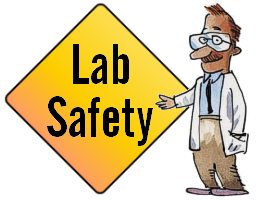
1. Conduct yourself in a responsible manner at all times in the laboratory.
2. Follow all written and verbal instructions carefully. If you do not understand a direction or part of a procedure, ASK YOUR TEACHER BEFORE PROCEEDING WITH THE ACTIVITY.
3. Never work alone in the laboratory. No student may work in the science classroom without the presence of the teacher.
4. When first entering a science room, do not touch any equipment, chemicals, or other materials in the laboratory area until you are instructed to do so.
5. Perform only those experiments authorized by your teacher. Carefully follow all instructions, both written and oral. Unauthorized experiments are not allowed.

6. Do not eat food, drink beverages, or chew gum in the laboratory. Do not use laboratory glassware as containers for food or beverages.

7. Be prepared for your work in the laboratory. Read all procedures thoroughly before entering the laboratory. Never fool around in the laboratory. Horseplay, practical jokes, and pranks are dangerous and prohibited.
8. Always work in a well-ventilated area.
9. Observe good housekeeping practices. Work areas should be kept clean and tidy at all times.
10. Be alert and proceed with caution at all times in the laboratory. Notify the teacher immediately of any unsafe conditions you observe.

11. Dispose of all chemical waste properly. Never mix chemicals in sink drains. Sinks are to be used only for water. Check with your teacher for disposal of chemicals and solutions.
12. Labels and equipment instructions must be read carefully before use. Set up and use the equipment as directed by your teacher.
13. Keep hands away from face, eyes, mouth, and body while using chemicals or lab equipment. Wash your hands with soap and water after performing all experiments.
14. Experiments must be personally monitored at all times. Do not wander around the room, distract other students, startle other students or interfere with the laboratory experiments of others.
15. Know the locations and operating procedures of all safety equipment including: first aid kit(s), and fire extinguisher. Know where the fire alarm and the exits are located.
16. Know what to do if there is a fire drill during a laboratory period; containers must be closed, and any electrical equipment turned off.
CLOTHING
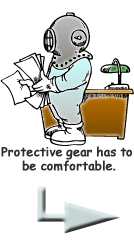
17. Any time chemicals, heat, or glassware are used, students will wear safety goggles. NO EXCEPTIONS TO THIS RULE!
18. Contact lenses may be not be worn in the laboratory.
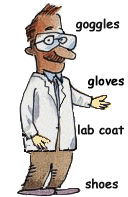
19. Dress properly during a laboratory activity. Long hair, dangling jewelry, and loose or baggy clothing are a hazard in the laboratory. Long hair must be tied back, and dangling jewelry and baggy clothing must be secured. Shoes must completely cover the foot. No sandals allowed on lab days.
20. A lab coat or smock should be worn during laboratory experiments.
ACCIDENTS AND INJURIES
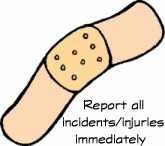
21. Report any accident (spill, breakage, etc.) or injury (cut, burn, etc.) to the teacher immediately, no matter how trivial it seems. Do not panic.
22. If you or your lab partner is hurt, immediately (and loudly) yell out the teacher’s name to get the teacher’s attention. Do not panic.
23. If a chemical should splash in your eye(s) or on your skin, immediately flush with running water for at least 20 minutes. Immediately (and loudly) yell out the teacher’s name to get the teacher’s attention.
HANDLING CHEMICALS
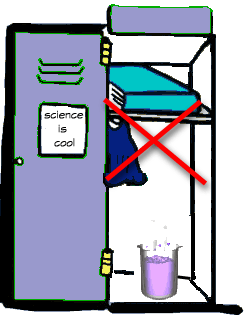
24. All chemicals in the laboratory are to be considered dangerous. Avoid handling chemicals with fingers. Always use a tweezer. When making an observation, keep at least 1 foot away from the specimen. Do not taste, or smell any chemicals.
25. Check the label on all chemical bottles twice before removing any of the contents. Take only as much chemical as you need.
26. Never return unused chemicals to their original container.
27. Never remove chemicals or other materials from the laboratory area.
HANDLING GLASSWARE AND EQUIPMENT
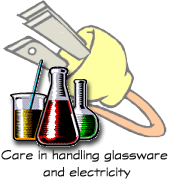
28. Never handle broken glass with your bare hands. Use a brush and dustpan to clean up broken glass. Place broken glass in the designated glass disposal container.
29. Examine glassware before each use. Never use chipped, cracked, or dirty glassware.
30. If you do not understand how to use a piece of equipment, ASK THE TEACHER FOR HELP!
31. Do not immerse hot glassware in cold water. The glassware may shatter.
HEATING SUBSTANCES
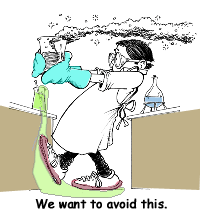
32. Do not operate a hot plate by yourself. Take care that hair, clothing, and hands are a safe distance from the hot plate at all times. Use of hot plate is only allowed in the presence of the teacher.
33. Heated glassware remain very hot for a long time. They should be set aside in a designated place to cool, and picked up with caution. Use tongs or heat protective gloves if necessary.
34. Never look into a container that is being heated.
35. Do not place hot apparatus directly on the laboratory desk. Always use an insulated pad. Allow plenty of time for hot apparatus to cool before touching it.
Laboratory Safety Rules: A Comprehensive Guide for Safe and Efficient Scientific Work
Laboratories are critical environments where scientific research, education, and experimentation occur. However, these environments also pose various hazards that can result in injury or property damage if proper safety protocols are not followed. Laboratory safety rules exist to ensure the safety of everyone working in these spaces, and they are essential for preventing accidents. In this detailed guide, we will explore various laboratory safety rules, their importance, and related safety protocols. Each rule will be discussed in depth with connected subtopics that help to further ensure the safety and efficacy of laboratory practices.
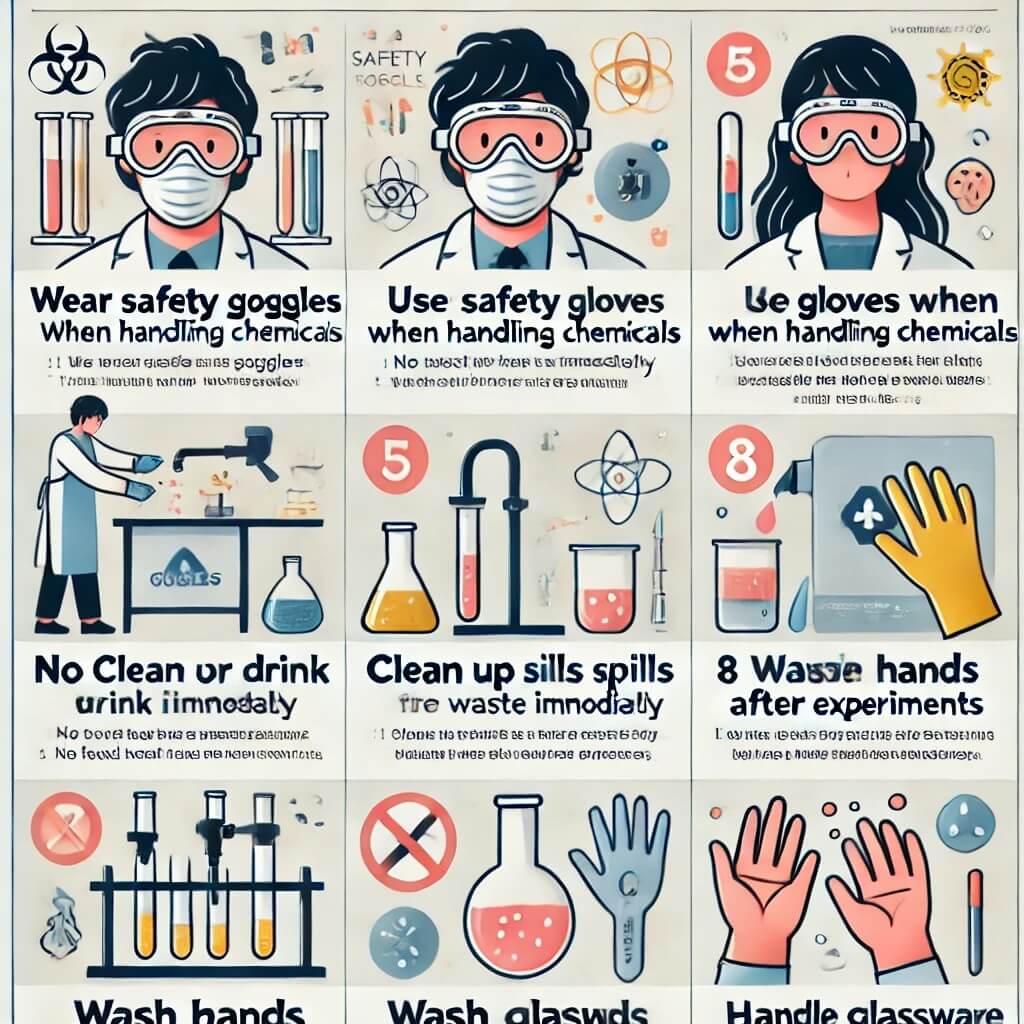
1. Wear Safety Goggles
The first and perhaps one of the most important rules in any laboratory is wearing safety goggles. Laboratories often involve the handling of chemicals, biological materials, and other hazardous substances that can easily damage the eyes. Safety goggles serve as a protective barrier between the eyes and these substances, shielding against splashes, debris, and harmful vapors.
1.1. Types of Safety Goggles
Safety goggles come in several types depending on the level of protection required:
- Direct-vented goggles: Provide protection from large particles but may not protect against vapors or splashes.
- Indirect-vented goggles: Offer better protection against chemical splashes while maintaining airflow to prevent fogging.
- Non-vented goggles: Ideal for environments where vapors and fine particles are a risk.
1.2. Importance of Proper Fit
Wearing improperly fitting goggles can lead to exposure of the eyes to harmful substances. It is essential that goggles fit snugly, covering the eyes completely without leaving gaps where chemicals or particles might enter.
2. Use Gloves When Handling Chemicals
Gloves are another essential piece of personal protective equipment (PPE). Chemical-resistant gloves provide an additional layer of protection to the skin when handling hazardous or corrosive substances. Gloves prevent direct contact with dangerous chemicals that could result in burns, irritation, or long-term health issues.
2.1. Types of Gloves
- Latex gloves: Commonly used in laboratories but may cause allergic reactions in some individuals. They provide good protection against biological hazards but are not suitable for handling many chemicals.
- Nitrile gloves: These gloves are resistant to a wide range of chemicals and are less likely to cause allergic reactions. They are ideal for working with oils, fuels, and solvents.
- Neoprene gloves: Resistant to chemicals, acids, and solvents, neoprene gloves are often used in chemical and petrochemical industries.
- Butyl gloves: Offer the best resistance to chemical exposure, particularly with highly corrosive or toxic chemicals such as sulfuric acid.
2.2. Proper Disposal of Gloves
It is important to know how to dispose of gloves properly to avoid contamination. Disposable gloves should never be reused, and after use, they must be discarded in a designated waste bin, particularly if they have come into contact with hazardous substances.
3. Tie Back Long Hair
Tying back long hair is a simple but crucial safety measure in the laboratory. Long hair can easily catch fire, get caught in machinery, or come into contact with chemicals if it is left loose. This rule applies to anyone with medium to long hair, as well as to those with loose clothing, such as scarves or jewelry.
3.1. The Dangers of Untied Hair in a Lab Setting
- Fire hazards: Hair can easily catch fire if it comes into contact with a Bunsen burner, open flame, or heated surface.
- Chemical exposure: Loose hair can inadvertently dip into chemicals, leading to contamination or damage to hair and scalp.
- Mechanical hazards: In labs with machinery, such as centrifuges or stirrers, hair can get caught and cause serious injury.
3.2. Best Practices for Securing Hair
Use hair ties, clips, or caps to secure hair. For environments where chemicals are involved, it’s also recommended to wear a lab cap or hood to ensure that no hair is exposed.
4. No Food or Drink in the Lab
Bringing food or drinks into a lab environment poses significant health risks. Chemical vapors, spills, and airborne particles can contaminate food, leading to ingestion of hazardous substances. Moreover, food or drink items can cause distractions, spills, or interfere with sensitive equipment.
4.1. Risks of Ingestion
Ingesting chemicals—even in small amounts—can have severe health consequences. Food and drinks can absorb chemicals from the air or surfaces, making them unsafe to consume. Even laboratories working with biological agents run the risk of cross-contamination.
4.2. Proper Storage of Food and Drink
In labs with designated break areas, it’s essential to ensure that food and drink are stored away from chemicals and lab materials. These areas should be separate, and food should never be brought into work zones.
5. Clean Up Spills Immediately
In the laboratory, spills are inevitable, but the response to a spill can make a significant difference in maintaining a safe environment. Immediate cleanup prevents exposure to harmful substances, reduces slip hazards, and ensures the lab remains functional for everyone.
5.1. Types of Spills
- Chemical spills: Spilled chemicals should be cleaned using the appropriate neutralizing agents and cleanup materials specific to the chemical involved.
- Biological spills: In the case of biological material, decontaminants such as bleach should be used to clean the affected area.
- Water or other non-hazardous liquids: These spills still pose slip hazards and should be cleaned up immediately to prevent accidents.
5.2. Spill Kits and Procedures
Every laboratory should have spill kits readily accessible for different types of spills. These kits typically contain absorbents, neutralizers, and PPE. Laboratory personnel should be trained on how to respond to spills, including notifying others, ventilating the area, and disposing of contaminated materials properly.
6. Dispose of Waste Properly
Proper waste disposal is vital for both safety and environmental reasons. Hazardous and non-hazardous wastes must be segregated and disposed of according to regulatory guidelines. Failure to dispose of waste correctly can result in contamination, accidents, or legal consequences.
6.1. Types of Laboratory Waste
- Chemical waste: Includes expired chemicals, contaminated materials, and solutions that can no longer be used. These should be disposed of in hazardous waste containers.
- Biological waste: Items contaminated with biological materials must be placed in biohazard bags or autoclaved before disposal.
- Glass waste: Broken glass and other sharp objects should be discarded in specially designated containers to prevent injuries.
- Radioactive waste: In laboratories using radioactive materials, special protocols must be followed to minimize exposure and properly dispose of these substances.
6.2. Waste Management Systems
A proper waste management system ensures that all types of waste are handled according to their specific needs. This includes labeling, containment, and disposal. Hazardous waste disposal companies may be contracted to handle certain types of laboratory waste.
7. Wash Hands After Experiments
Even with gloves, it’s essential to wash hands thoroughly after handling any chemicals, biological materials, or other substances in the lab. Gloves can develop small tears or leaks, and chemicals can still adhere to the skin.
7.1. Proper Handwashing Technique
Handwashing should be done with soap and water for at least 20 seconds. This helps remove any residue that may have come into contact with the skin, even if it isn’t visible. Hand sanitizers can be used in the absence of soap and water, but they are not always effective for removing certain chemicals or biological materials.
7.2. Importance of Regular Hand Hygiene
Regular hand hygiene prevents the spread of contaminants beyond the lab and minimizes the risk of personal exposure. It’s particularly important when transitioning between different lab environments or leaving the lab area for breaks.
8. Handle Glassware Carefully
Laboratories often use glassware for holding, mixing, and storing liquids and chemicals. Handling glassware with care is essential to avoid breakage, injury, and contamination. Broken glass can cause cuts and punctures, while broken containers may lead to chemical spills.
8.1. Types of Glassware in Labs
- Beakers and flasks: Used for holding liquids, these are prone to breaking if knocked over or heated too rapidly.
- Pipettes and burettes: Used for measuring liquids, they are fragile and can easily snap if mishandled.
- Glass slides and cover slips: Common in biological labs, these items are small but very sharp when broken.
8.2. Safe Handling Techniques
Always handle glassware with both hands, especially when it’s full or being transported. Avoid sudden temperature changes (e.g., moving glassware from a hot plate to a cold surface) to prevent cracking. Any damaged glassware should be disposed of in a designated broken glass container.
Conclusion
Adhering to these essential laboratory safety rules can significantly reduce the risk of accidents, injuries, and contamination. Each rule addresses specific hazards present in labs, but when taken together, they create a culture of safety that benefits all lab personnel. Consistent training, awareness, and vigilance are key to maintaining a safe laboratory environment, ensuring that scientific discovery can progress without unnecessary risks. By wearing appropriate PPE, properly handling materials, and adhering to safety protocols, we can ensure that labs remain productive and safe places for experimentation and learning.


